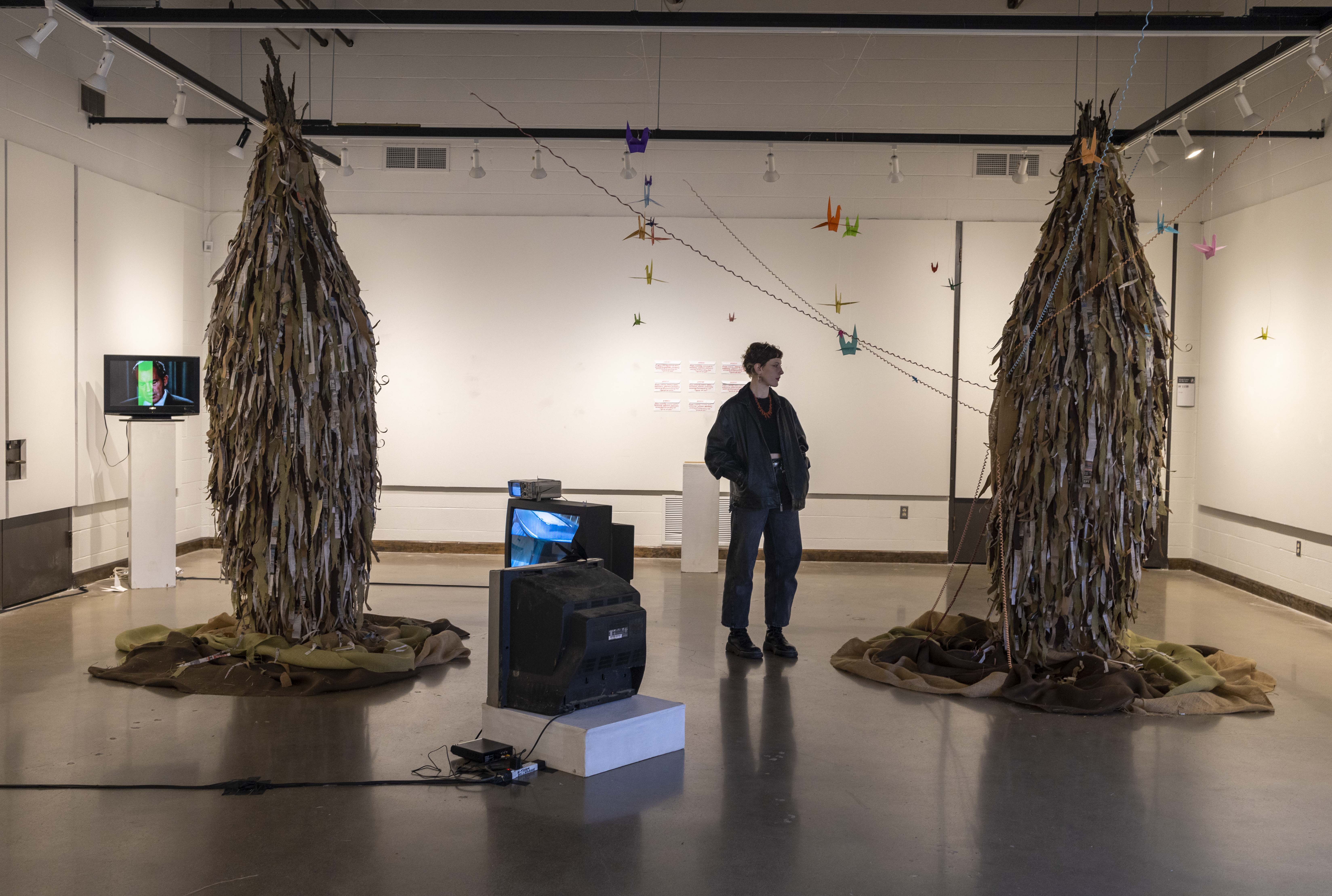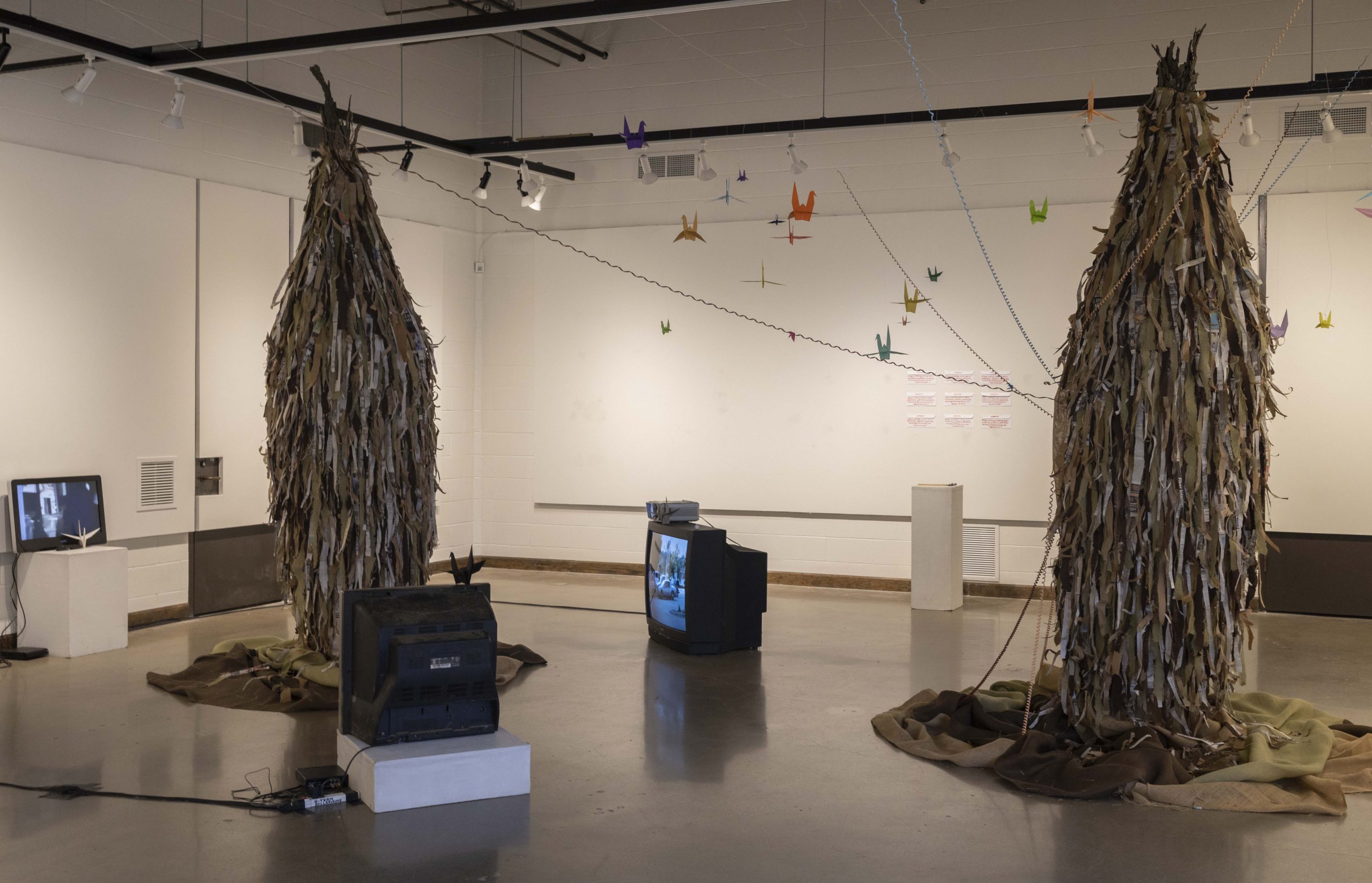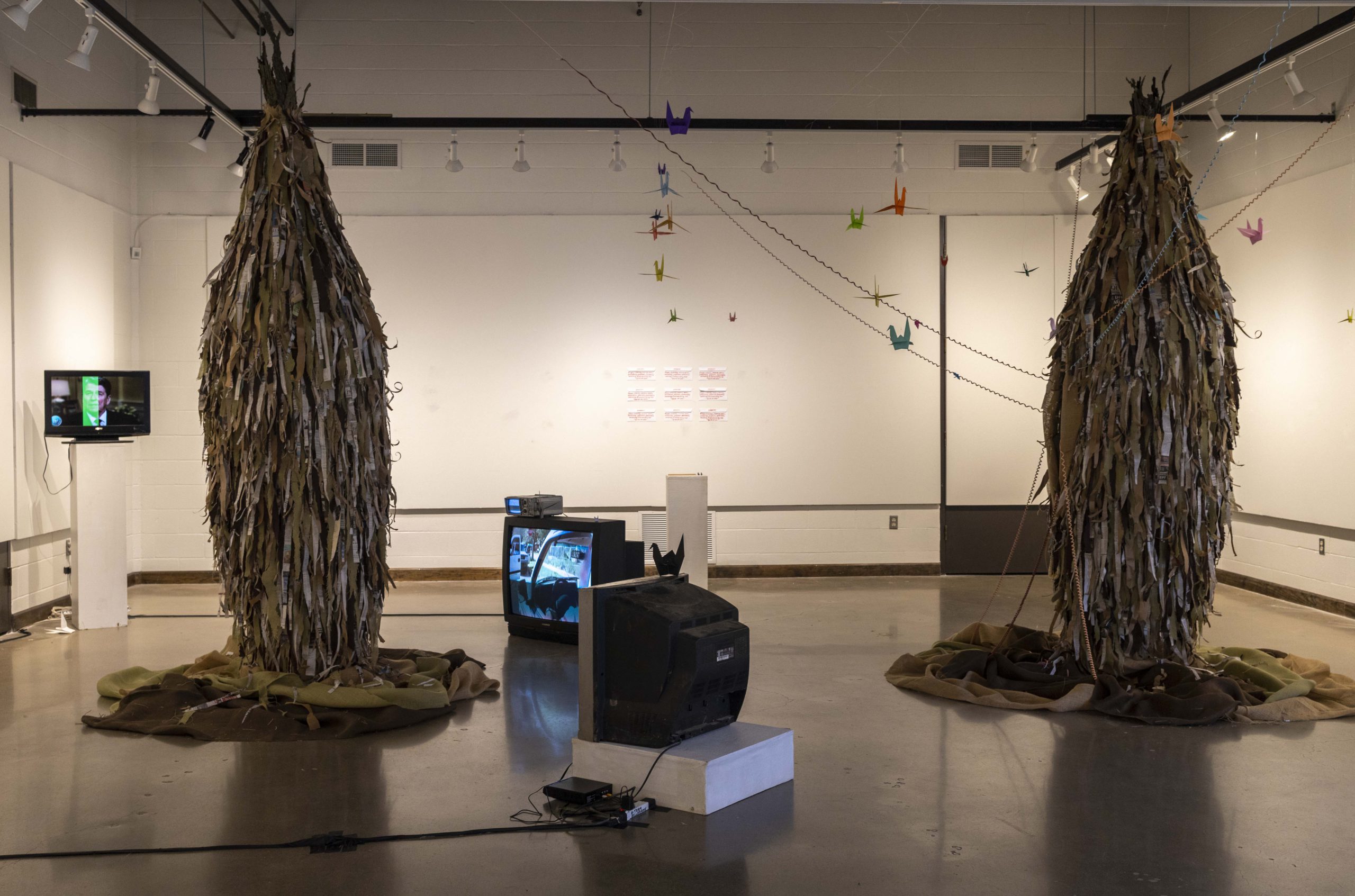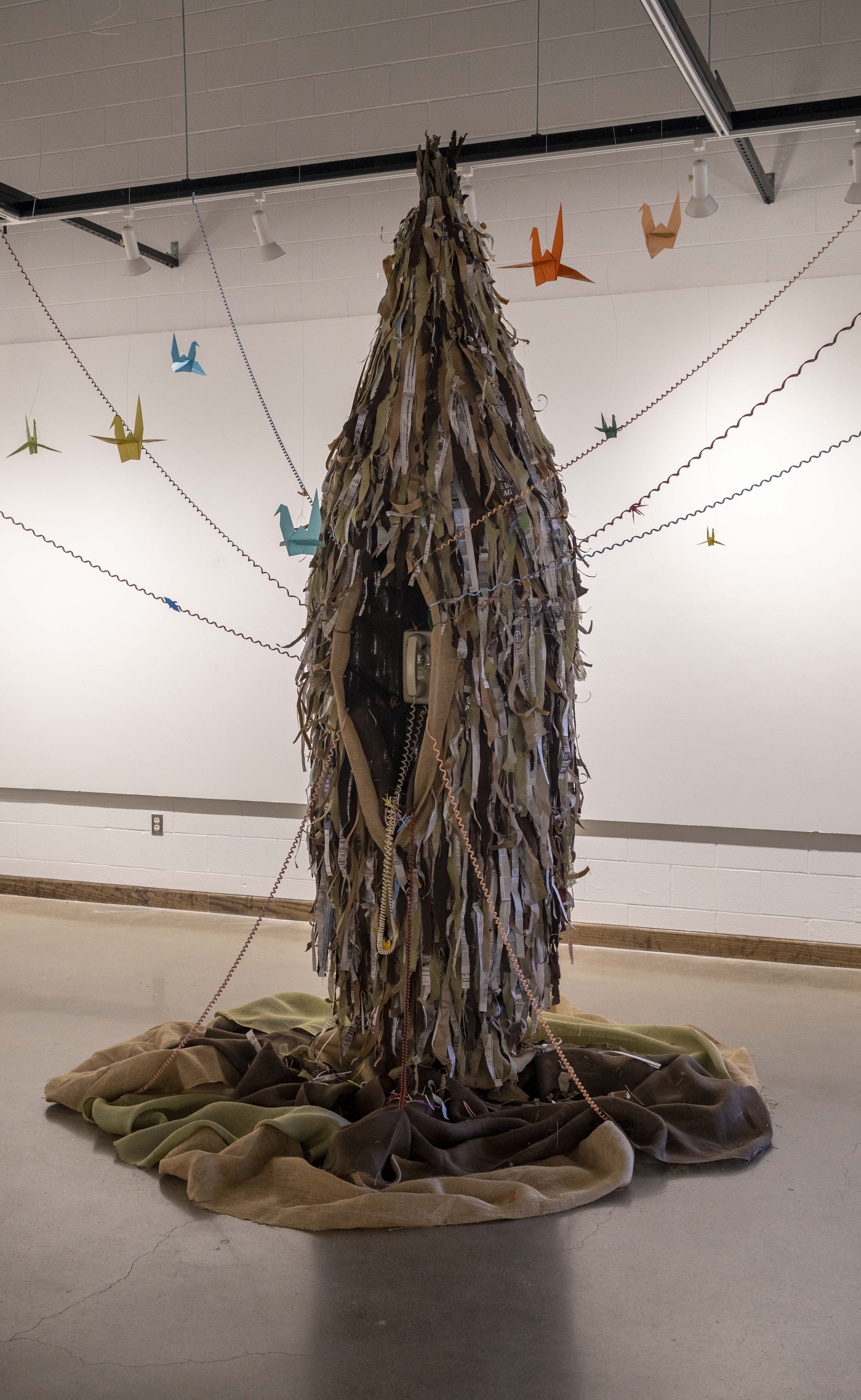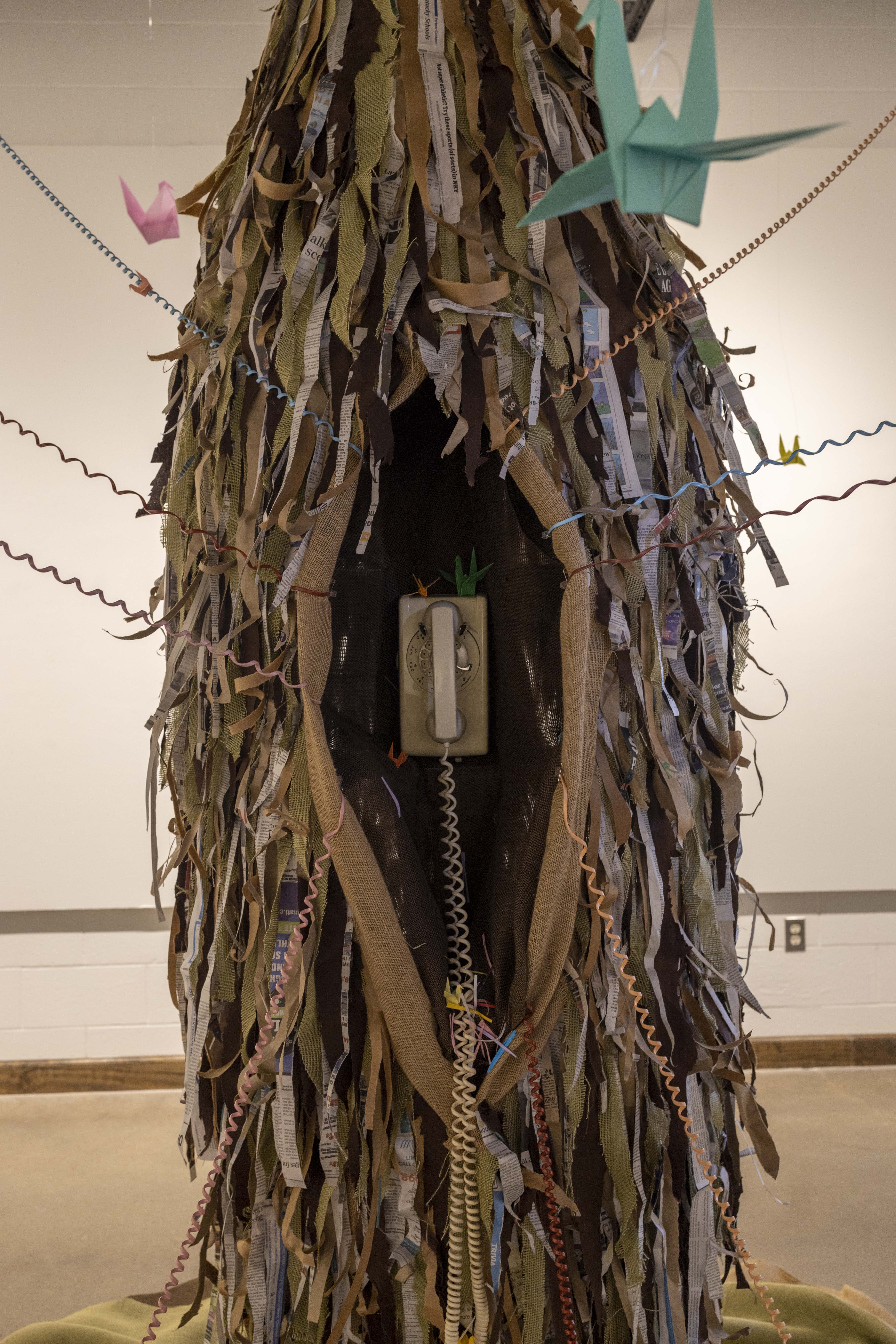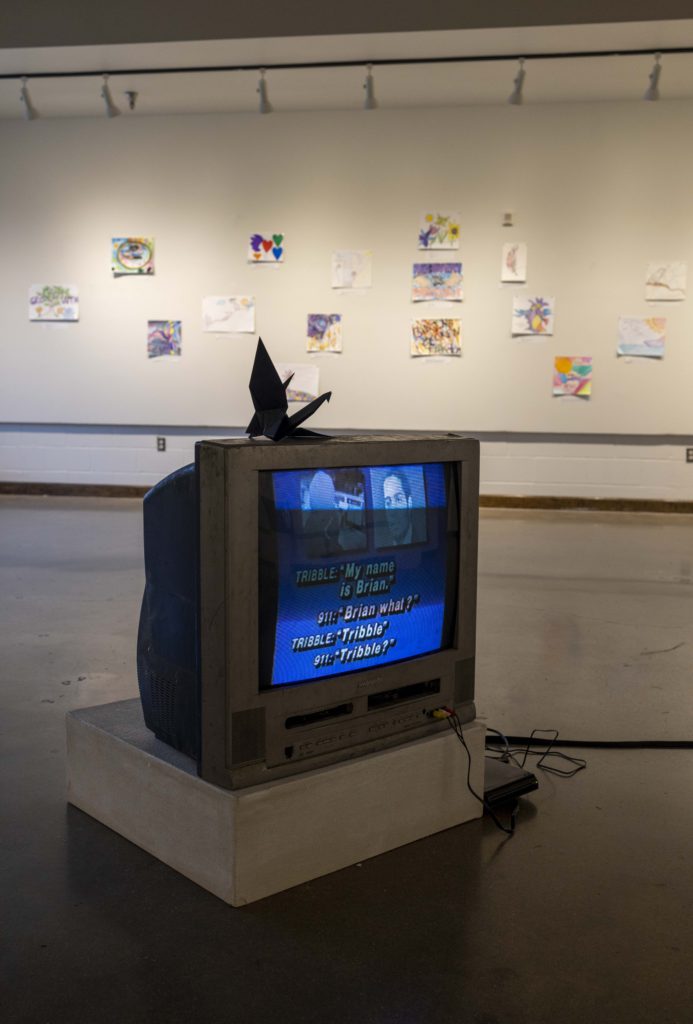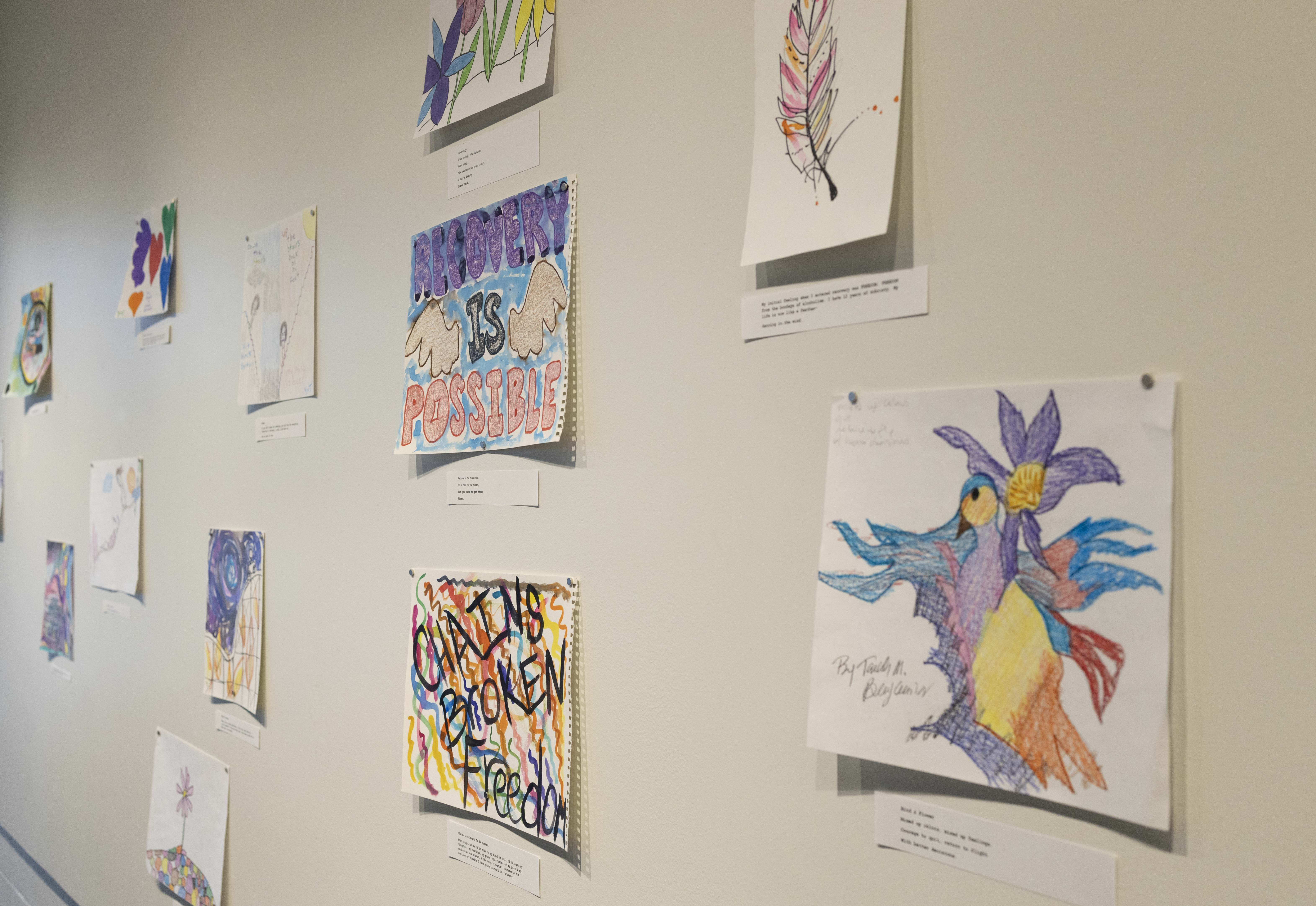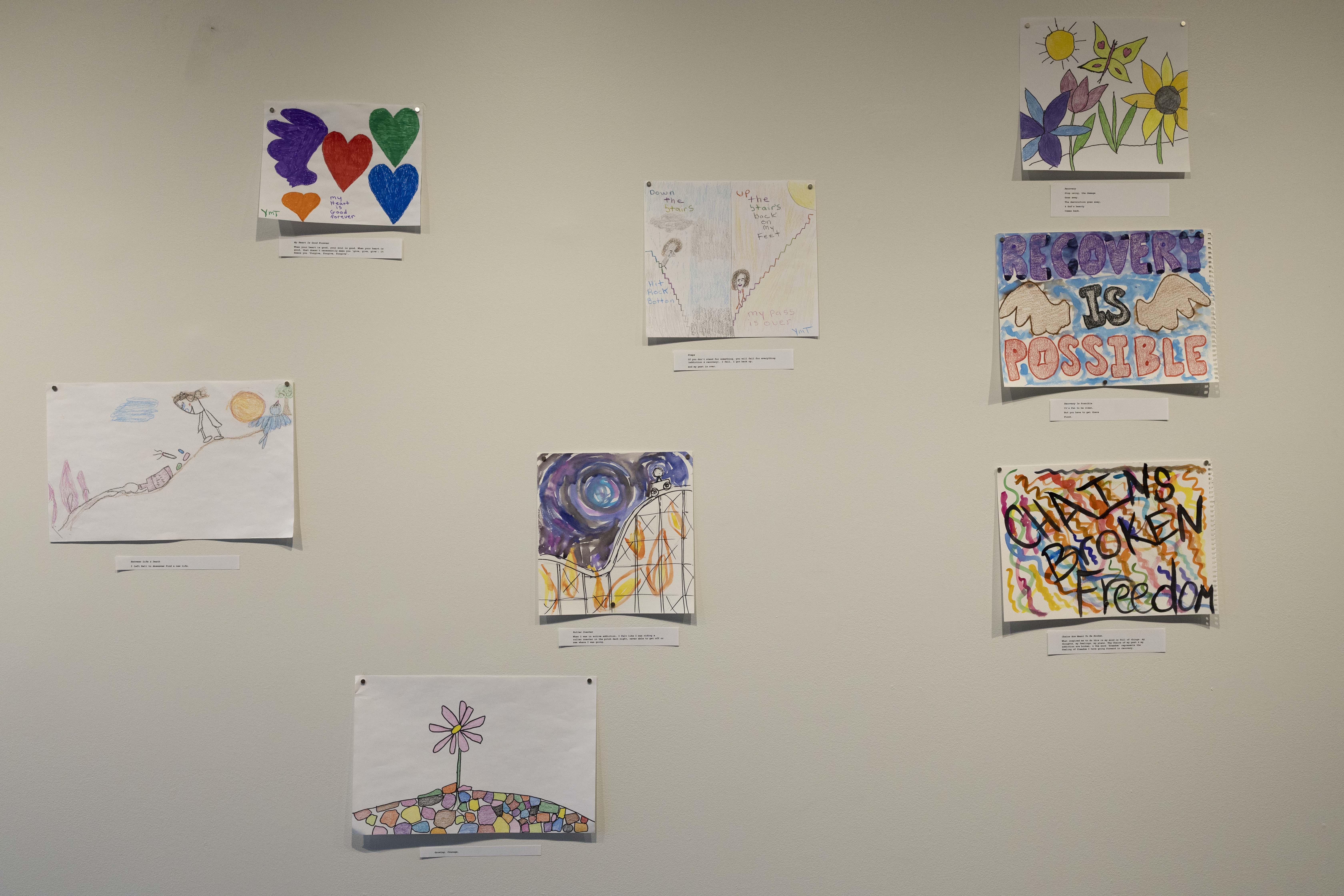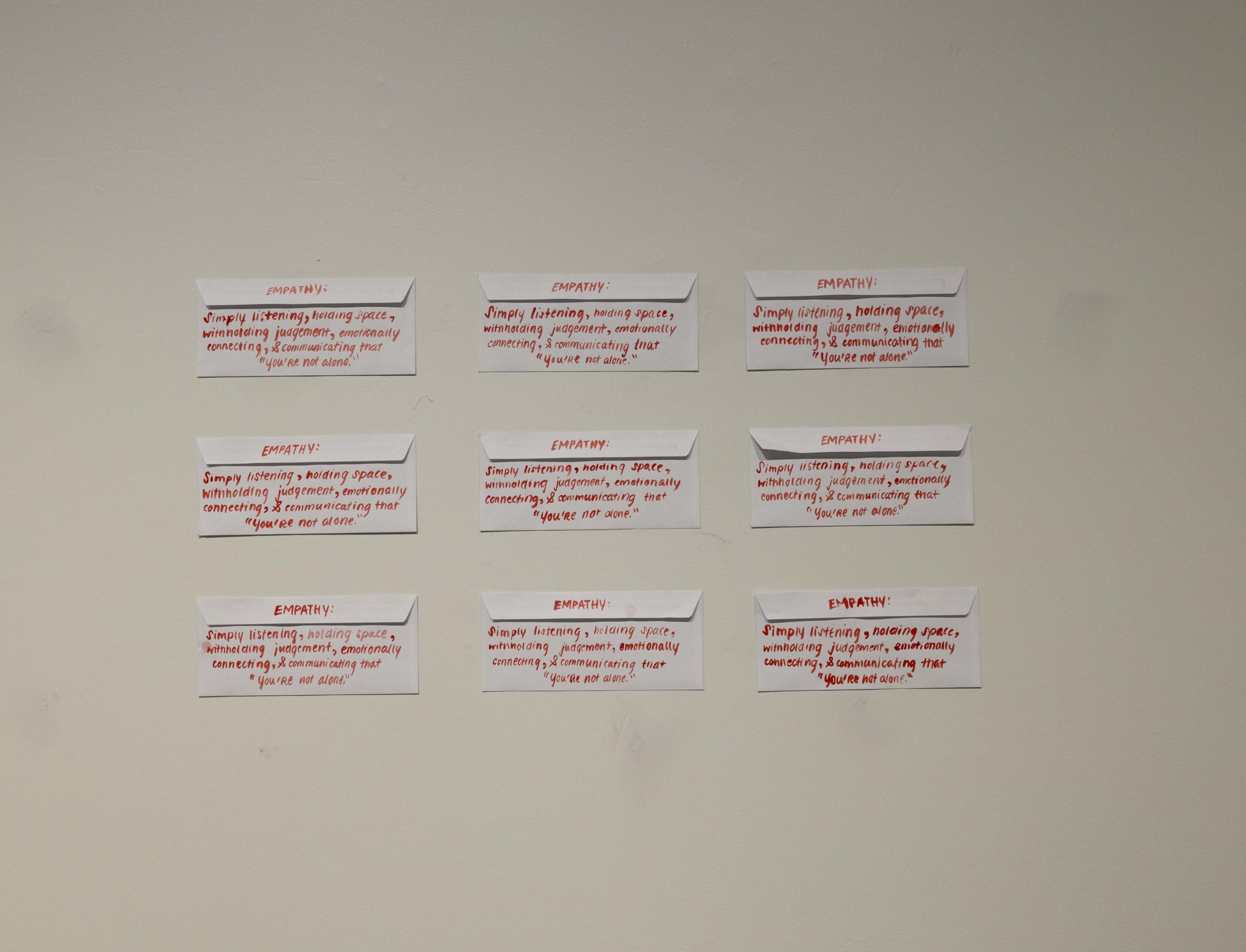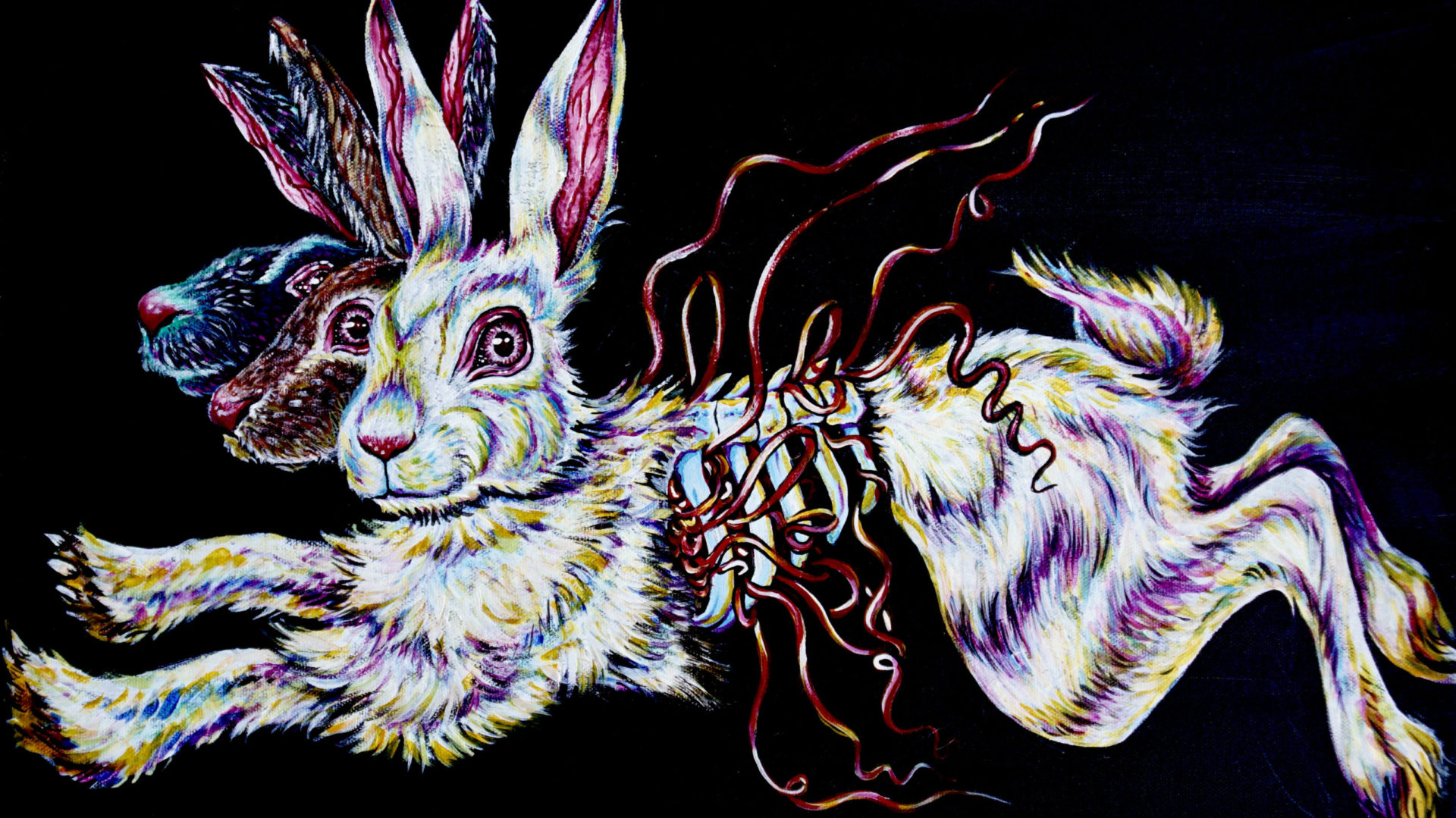An Artistic Investigation Into the Impacts of Stigma Surrounding Substance Use Disorder
This interdisciplinary creative thesis aims to deconstruct the stigma that surrounds individuals who struggle with substance use disorder (SUD). For this exhibit, I built two large-scale sculptures and curated artwork from individuals in rehabilitation at Crossroads Recovery Center in Cincinnati, OH.
I chose to model the sculptures after bagworm cocoons, which they create from natural elements in their surrounding environments, such as sticks and pine needles. Similarly, people often construct their personal environment based on what they’re surrounded by. If their external environment is rife with stigma, that will shape their personal world as well. Stigma creates an imprisoning cocoon, one that never opens or permits transformation, which is especially harmful for those who struggle with SUD.
For The Hurt, a closed cocoon portrays the negative impacts that stigma causes for individuals with SUD. It’s surrounded by television sets playing compiled archival footage related to SUD stigma as it has been communicated through television media in the past few decades. Stigma keeps people struggling with substance use imprisoned, unable to attain healing or achieve recovery. As another symbol of mass media, newspaper strips help form the exterior of the cocoons.
In contrast, The Healing, represents the healing and transformation that can be achieved through empathy and compassion. The television sets have been replaced by a telephone, and multicolored cords burst forth from the open cocoon. One of the ways we can uproot stigma and foster empathy in its place is through communication and community. For those in recovery, these are often fostered through the medium of telephone calls with loved ones. Multicolored origami birds – Japanese symbols of peace, happiness and recovery – perch on the telephone cords and fly around the cocoon to represent healing and freedom.
Inspiration for this exhibit comes from interviews conducted with individuals who generously shared their history and personal experiences with substance use; documentaries about SUD; personal volunteer experiences with Art for All People in Cincinnati, Ohio; scholarly journal articles; contemporary artists such as Nam June Paik, Eva Hesse, Andy Warhol, and John Baldessari; and other forms of research.
